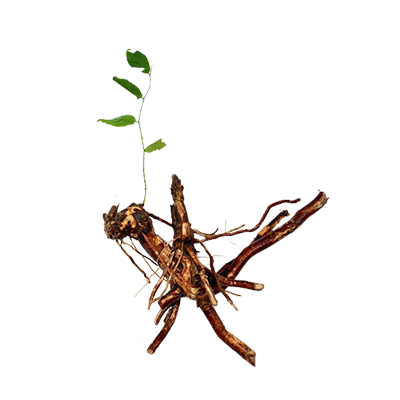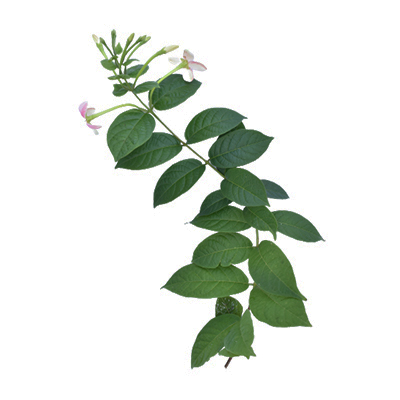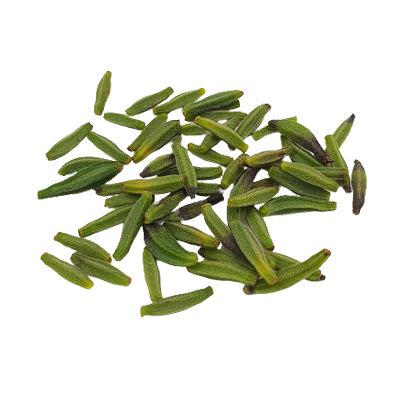Rangoon Creeper
Combretum indicum (L.) DeFilipps
Combretaceae
Location in our garden
Principal
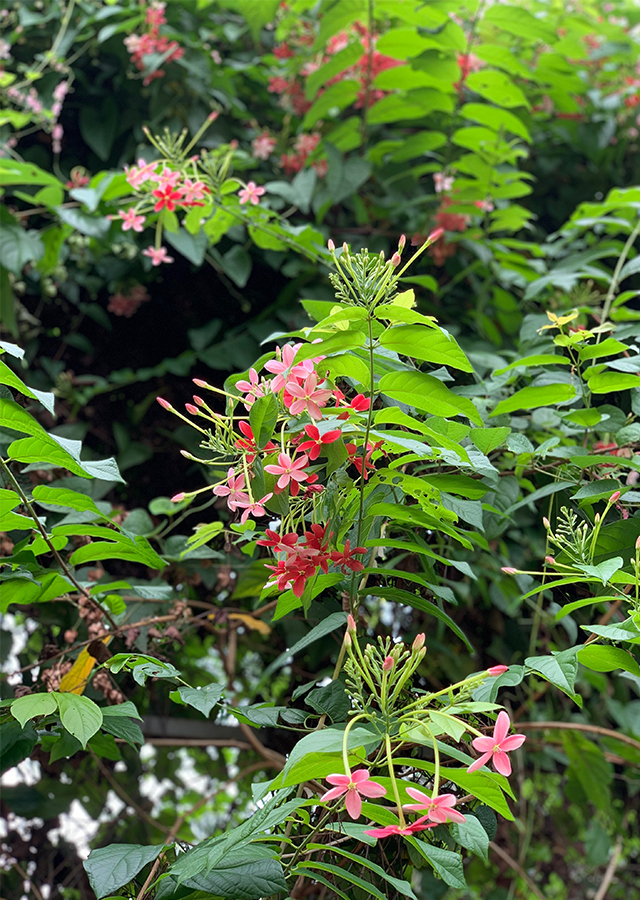
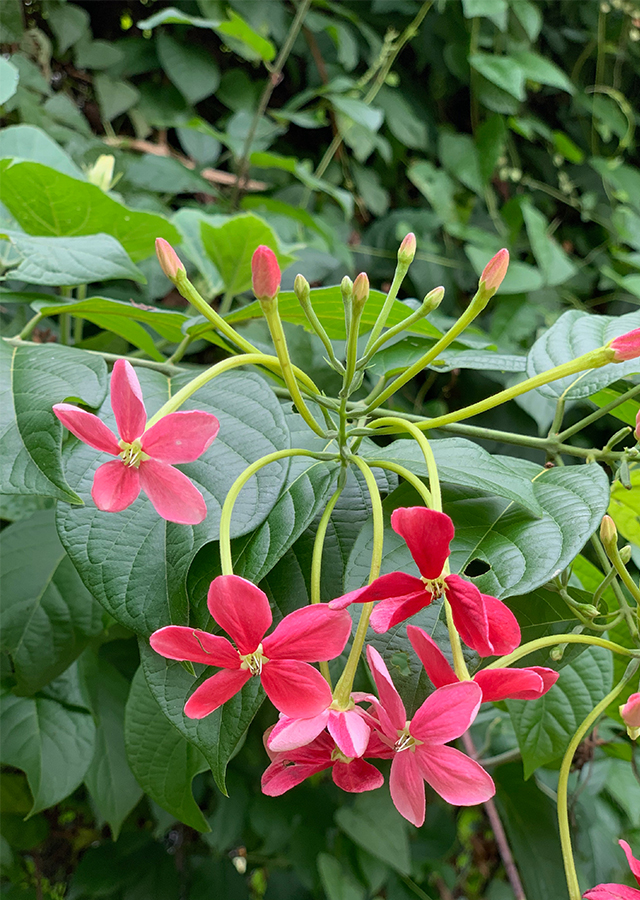
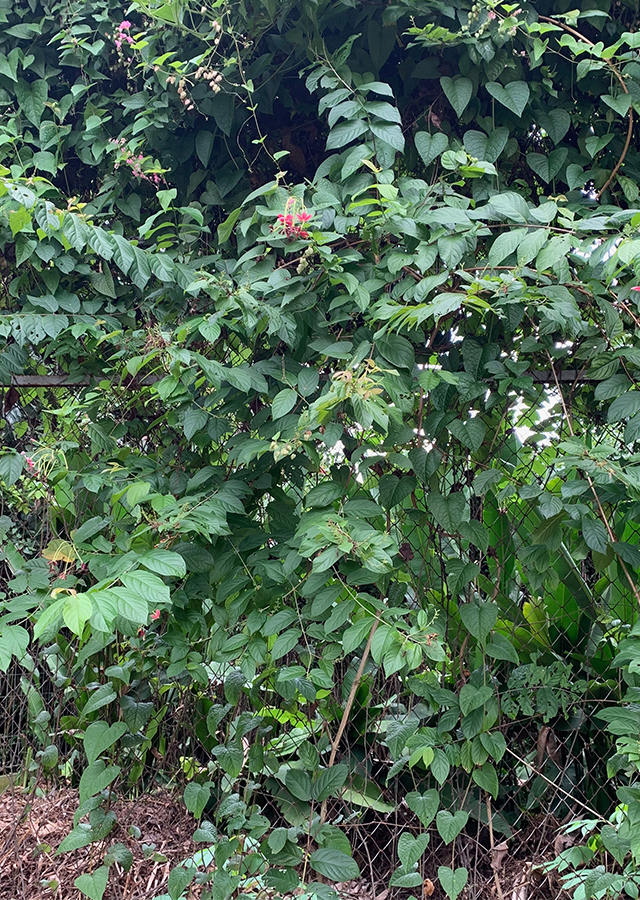
Synonym
Quisqualis indica L.
Kleinia quadricolor Crantz
Mekistus sinensis Lour ex Gomes Mach.
Habitus
Climbers. A vigorous, fast growing, climbing, woody shrub reaching a lenght of 2-8 m.
Part Used
Leaves
Seeds
Fruit
Roots
The Whole Plant
Growing Requirements
Full Sunshine
Need Shade
Habitat
Riverbanks
Forest
Mountains
Roadside
Shrublands
Overview
Rangoon creeper is native to Asia and possibly tropical Africa where it is abundant, but the species is widely cultivated in the Neotropics. It has been widely cultivated as an ornamental for its aromatic flowers, as a hedge climber, and for use in traditional medicine, resulting in the species widespread distribution to all tropical regions of the world.
Vernacular Names
Dawe-hmaing-nwe (Myanmar), Udani (Malaysia), Shi jun zi (Chinese), Dok ung (Laos), Quiscual (Spanish), Shikunshi (Japanese), Cha mang
(Thailand), Daay giun (Vietnamese), Rangoon ki bel (India). Niog-niogan (Philippines).
Agroecology
Rangoon creeper is commonly cultivated in homes and gardens, and has been known to naturalize around inhabited areas. It occurs in a
wide range of habitats: rainforests, low woods, thickets, hedges, mountains, dry hillsides, riversides, roadsides, and wasteland .at elevations below 1,500 m. Succeeds in the tropical, subtropical and warm temperate zones, in full sun or partial shade.
Morphology
- Stems - much-branched stems can grow up to 20 m long in tropical climates.
- Leaves - oblong to elliptic, opposite, 7-15 cm long, rounded at the base and pointed at the tip.
- Flowers - fragrant, tubular, showy, first white, then becoming red, reddish-purple or orange, exhibiting the range of colors in clusters, on the same flower stalk.
- Fruits - narrowly ellipsoid, 2.5 to 3 cm long, with five, sharp, longitudinal angles or wings.
- Seeds - pentagonal and black.
Cultivation
- Propagated by seeds and softwood cuttings.
Chemical Constituents
Alkaloids, amino acid, saponins, glycosides, steroids, tannins, flavonoids and phenolic compounds, quisqualic acid, quisqualin A, rutin, trigonelline, L-proline, L-aspargine, oleic acid, palmitic acid, pelargonidin-3-glucoside.
Traditional Medicinal Uses
- The plant is widely used in traditional medicine, valued particularly for ridding the body of parasites. The plants are eaten daily by men and women as a method of birth control.
- A concentrated decoction of the fruit is used as a gargle that is effective against toothache.
- A decoction of the seed is used as a vermifuge, and is given to children to stop diarrhoea. The seeds, macerated in oil, are applied to parasitic skin diseases, boils or sores on children's faces.
- A decoction of the root is used as a vermifuge and also to treat rheumatism.
- The juice of the leaves is considered a remedy for boils and ulcers and the leaves are applied to the head to relieve ache caused by jungle fever.
- The seeds are anthelmintic, used particularly to treat ascarids, and to alleviate nephritis.
Part Used
Reference Sources
- Datiles, M.J. (2015). CABI. Invasive Species Compendium. Combretum indicum (Rangoon creeper). https://www.cabi.org/isc/datasheet/46654#F1B99E9B-DC87-4CDB-858B-3C8591AE8471. 14-09-2020.
- Fern, Ken. (2014). Useful Tropical Plants. Combretum indicum. http://tropical.theferns.info/viewtropical.php?id=Combretum+indicum. 14-09-2020.
- Gurib-Fakim, A. (2012). Pl@nt Use. Plant Resources of Tropical Africa. Combretum indicum (PROTA). https://uses.plantnet-project.org/en/Combretum_indicum_(PROTA). 14-09-2020.
- StuartXchange. (2019). Philippine Medicinal Plants. Niog-niogan. http://stuartxchange.com/Niyog.html. 14-09-2020.
